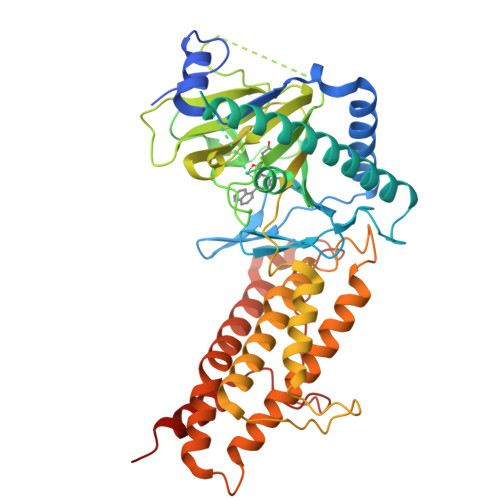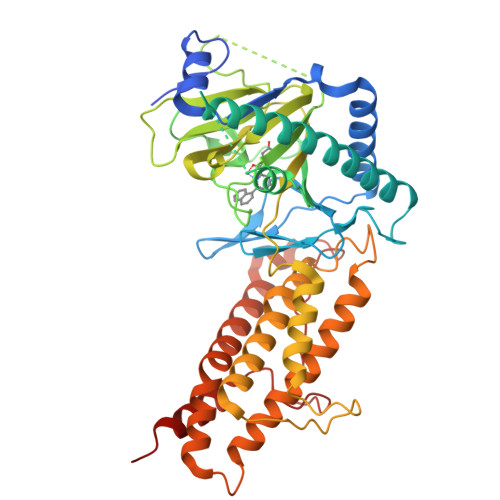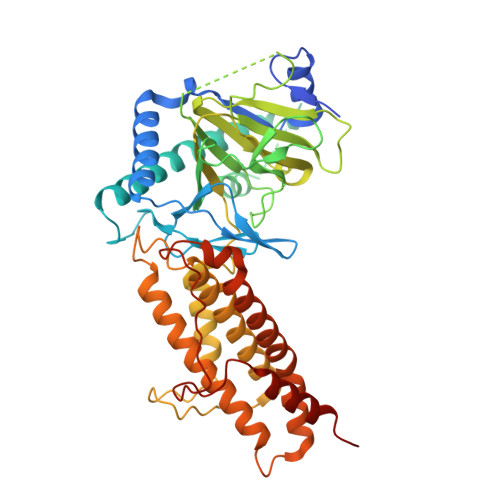Structure-Based Design of Selective Fat Mass and Obesity Associated Protein (FTO) Inhibitors.
Shishodia, S., Demetriades, M., Zhang, D., Tam, N.Y., Maheswaran, P., Clunie-O'Connor, C., Tumber, A., Leung, I.K.H., Ng, Y.M., Leissing, T.M., El-Sagheer, A.H., Salah, E., Brown, T., Aik, W.S., McDonough, M.A., Schofield, C.J.(2021) J Med Chem 64: 16609-16625
- PubMed: 34762429
- DOI: https://doi.org/10.1021/acs.jmedchem.1c01204
- Primary Citation of Related Structures:
4QHO, 7E8Z, 7NRO - PubMed Abstract:
FTO catalyzes the Fe(II) and 2-oxoglutarate (2OG)-dependent modification of nucleic acids, including the demethylation of N 6 -methyladenosine (m 6 A) in mRNA. FTO is a proposed target for anti-cancer therapy. Using information from crystal structures of FTO in complex with 2OG and substrate mimics, we designed and synthesized two series of FTO inhibitors, which were characterized by turnover and binding assays, and by X-ray crystallography with FTO and the related bacterial enzyme AlkB. A potent inhibitor employing binding interactions spanning the FTO 2OG and substrate binding sites was identified. Selectivity over other clinically targeted 2OG oxygenases was demonstrated, including with respect to the hypoxia-inducible factor prolyl and asparaginyl hydroxylases (PHD2 and FIH) and selected JmjC histone demethylases (KDMs). The results illustrate how structure-based design can enable the identification of potent and selective 2OG oxygenase inhibitors and will be useful for the development of FTO inhibitors for use in vivo .
Organizational Affiliation:
The Chemistry Research Laboratory, Department of Chemistry and the Ineos Oxford Institute for Antimicrobial Research, University of Oxford, 12 Mansfield Road, Oxford OX1 3TA, U.K.




















